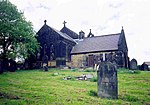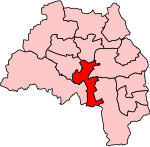Sheriff Hill Colliery
AC with 0 elementsCoal mines in County DurhamGateshead

Sheriff Hill Colliery or Ellison Main Colliery was a coal mine at Gateshead Fell in County Durham, England. The colliery had two shafts and provided employment to the residents of Sheriff Hill, after it opened in 1793. There were many major accidents resulting in the deaths of workers at the colliery. There was a protracted strike at the colliery in 1834. The colliery closed in 1926.
Excerpt from the Wikipedia article Sheriff Hill Colliery (License: CC BY-SA 3.0, Authors, Images).Sheriff Hill Colliery
Old Durham Road,
Geographical coordinates (GPS) Address Phone number Website Nearby Places Show on map
Geographical coordinates (GPS)
| Latitude | Longitude |
|---|---|
| N 54.930555555556 ° | E -1.5736111111111 ° |
Address
Cardinal Hume Catholic School
Old Durham Road
NE9 6RZ , Wrekenton
England, United Kingdom
Open on Google Maps








